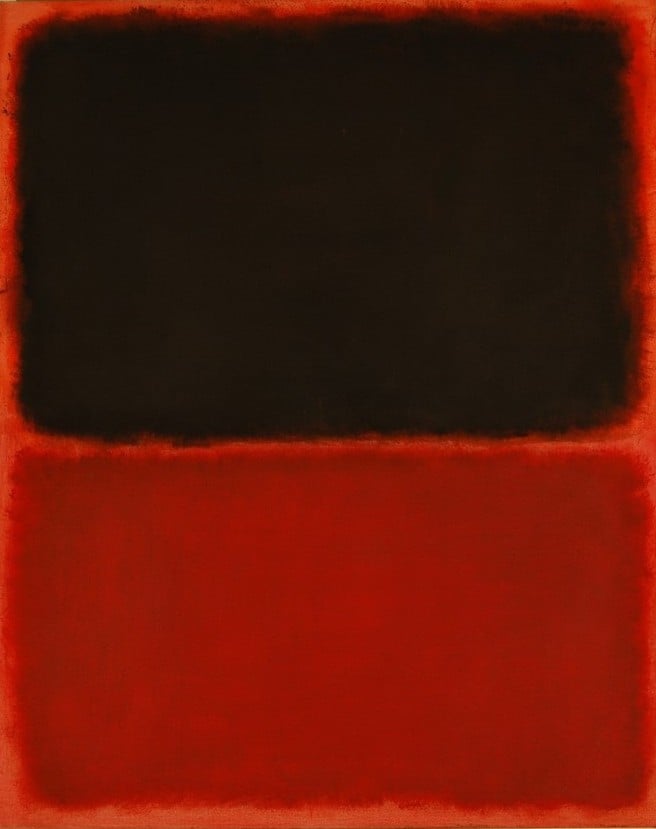artnet news reports on the activity in the Knoedler/De Sole trial being held in New York. De Dole, suing Knoedler for $25 million after purchasing a fake Rothko for $8.3 million in 2004. Certainly an interesting and entertaining case to follow.
artnet news reports
Source: artnet newsDomenico De Sole took the stand in U.S. District Court in Manhattan on Wednesday, testifying in front of the fake Rothko that he purchased at the Knoedler Gallery in 2004 for $8.3 million. De Sole, along with his wife, is suing Knoedler, its former president Ann Freedman, and the gallery’s holding company 8-31 for $25 million in damages.
Questioned by his lawyer, Gregory Clarick, De Sole, who was born in Italy and is the former head of Gucci America and a founder of Tom Ford International, as well as the chairman of the board of Sotheby’s, testified that he is not a “sophisticated art expert.” (“I could talk about handbags,” he said.) When asked how he decides what to buy as an art collector, he said simply that his wife makes the decisions, and he has “no choice.” “But we decide together,” he said. “Allegedly.” Being chairman of Sotheby’s does not require being an expert on art, he said. “You need to know business.”
De Sole described the experience of going, along with his wife, to Knoedler—for what he claimed was the first and last time—in 2004, looking to buy a work by Sean Scully. He met with Freedman, who said she didn’t have any work by Scully available, but showed him two paintings in her office—one a fake Rothko, and the other a fake Pollock, both of which came to Knoedler from Glafira Rosales, a Long Island dealer who ran a forgery ring through Knoedler for 15 years. (The gallery’s lawyers argue that Freedman was not aware that the work Rosales was bringing to Knoedler was fake.)
Melissa DeMedeiros, the former head of research at Knoedler and, for a time, an assistant to Freedman, also testified on Wednesday. Much of the questioning dealt with “Mr. X,” an anonymous collector with residencies in Switzerland and Mexico whom Rosales invented to establish provenance for the fake paintings. Mr. X, DeMedeiros said, wanted the family name kept private and refused to disclose it to anyone at Knoedler.
(DeMedeiros testified that Freedman often referred to Mr. X as “Secret Santa.”)
Rosales claimed that Mr. X obtained the paintings from the artists directly, with the help of David Herbert, who worked at the Sidney Janis and Betty Parsons galleries throughout the 1950s, and had close ties with the Abstract Expressionist artists whose work Rosales was purporting to sell. The paintings, Rosales claimed, were then inherited by Mr. X’s children after his death, and it was the son of Mr. X that Rosales said she was dealing with in her conversations with Knoedler.
The Rothko that the De Soles ended up purchasing was said to come from the collection of Mr. X. De Sole said Freedman told him that Christopher Rothko, the artist’s son, had authenticated the painting. De Sole testified that he had “no reason to believe someone was lying to me” at Knoedler, so he did not take further steps to prove it was a real Rothko. He “respected the brand” of Knoedler, which he described as “the most trusted, oldest, most important gallery” in America.
De Sole was tipped off that the painting was suspect by an article in the New York Times, he said, which reported that another collector, Pierre La Grange, was in litigation with Knoedler over an inauthentic Pollock, which the gallery had said also came from the collection of an anonymous Swiss client. De Sole said he called Freedman, who was “very aggressive,” saying the Rothko was a “true painting,” and that La Grange was wrong. She said she would call him back, De Sole said, but she never did.
Clarick asked De Sole if he understood now that the Rothko, which was displayed next to the witness stand on an easel, was fake. De Sole said he did. Asked if that knowledge changed the painting’s value, De Sole laughed frustratedly.
“I think so!” he said sarcastically. “It’s worthless.” He said this whole ordeal has been hard on his family and that his wife “cries now every night.”
“I got a fake painting for $8.3 million and they don’t want to give it back to me. That’s what I know.” He frowned, crossed his arms, and sat back heavily in his chair.
His cross-examination by Freedman’s attorneys continues today.



No comments:
Post a Comment